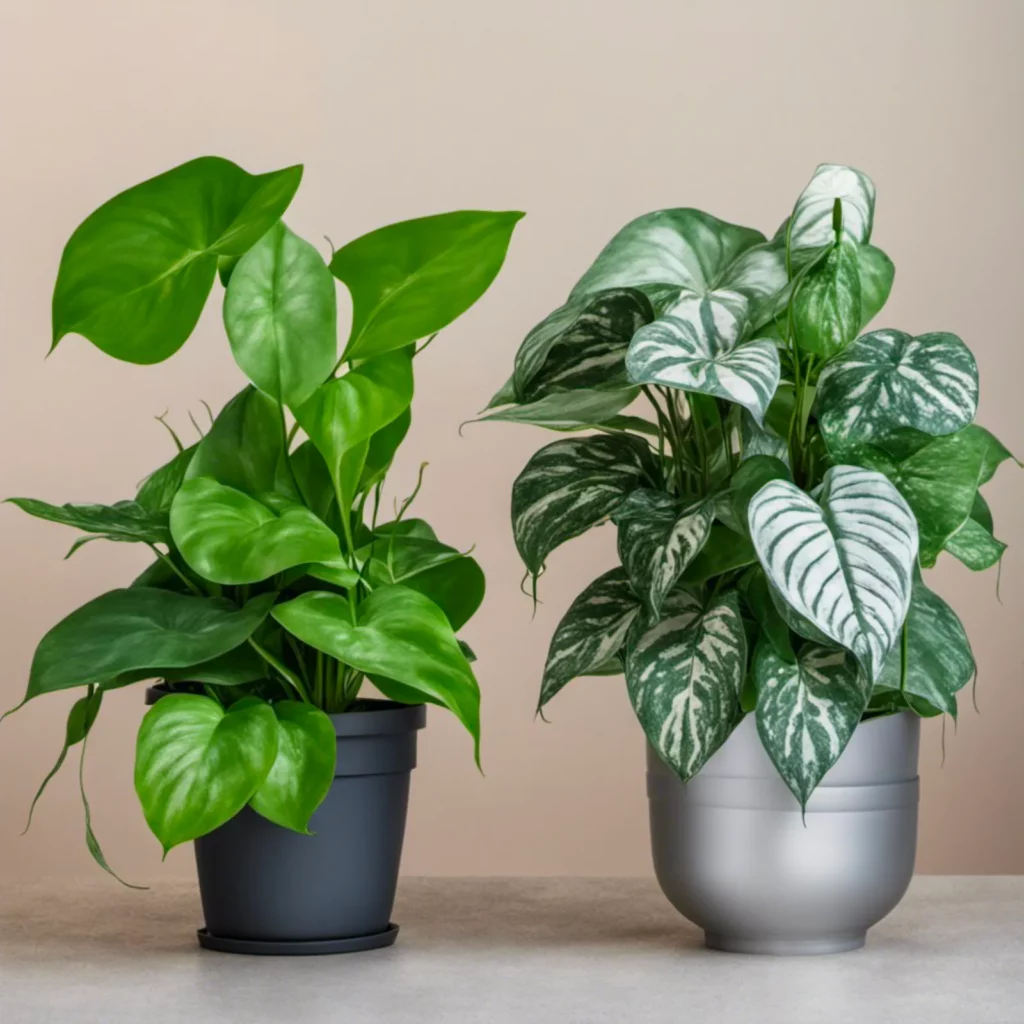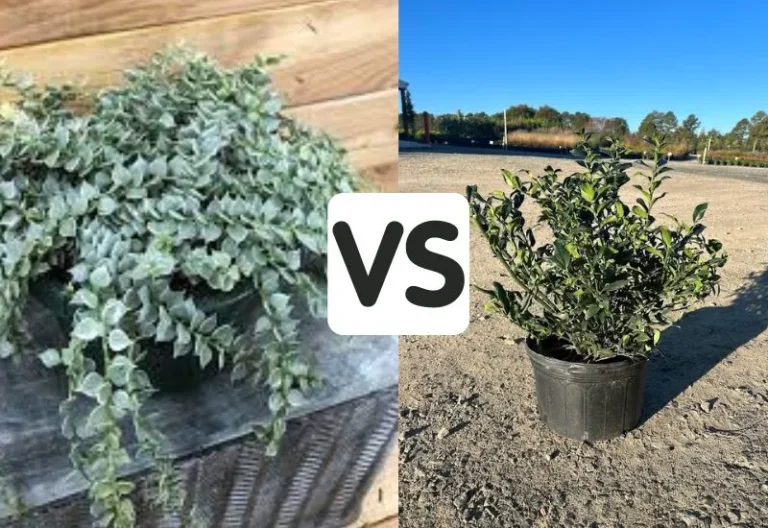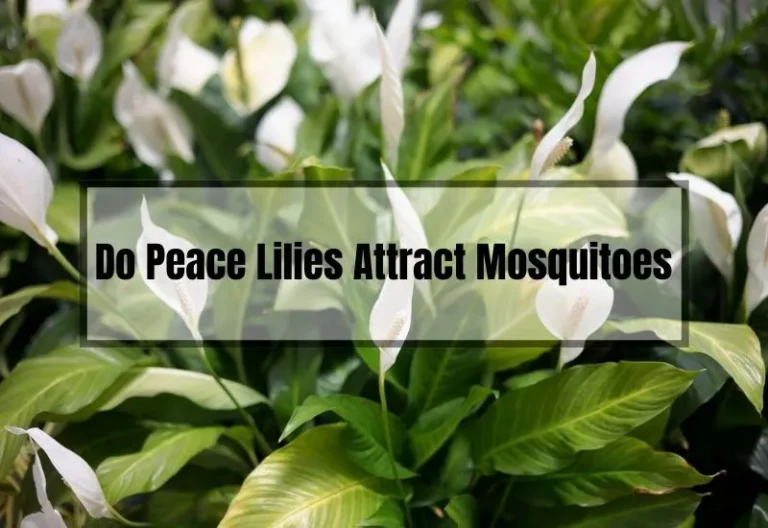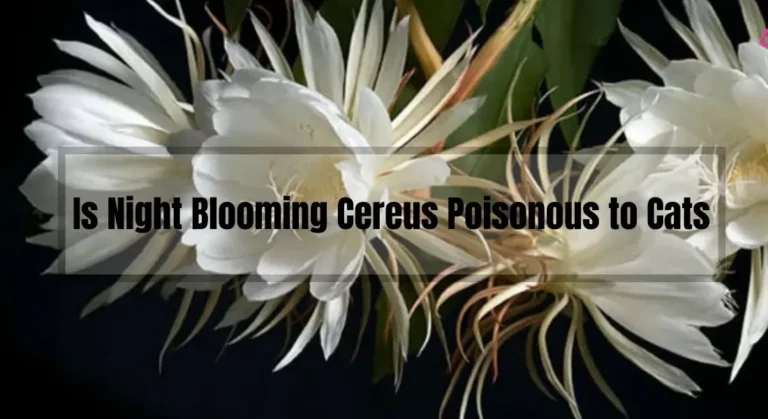Scindapsus Pictus vs Silver Satin Pothos: Which is the Best Indoor Plant for You?
From Louise: Passionate about gardening, I specialize in plant care and flower knowledge. I’m here to share my expertise and assist with your gardening queries. Feel free to ask any questions or seek advice on lawn care—I’ll respond within 24 hours!
If you’re an indoor gardening enthusiast, you might be wondering which plant to add to your collection: Scindapsus Pictus or Silver Satin Pothos. In this article, we’ll provide a detailed comparison of these two popular indoor plants, focusing on their appearance, to help you make an informed decision.
Scindapsus Pictus, also known as Satin Pothos, is a variegated plant with silvery gray patches and a glittering sheen. In contrast, Silver Satin Pothos has larger leaves with a velvety texture and a silver sheen. Both plants have distinct differences that we will explore in this article.
Key Takeaways
- This article provides a detailed comparison of Scindapsus Pictus and Silver Satin Pothos, two popular indoor plants.
- We will focus on the appearance of these plants to help you make an informed decision.
- Scindapsus Pictus has variegated leaves with silvery gray patches, while Silver Satin Pothos has larger leaves with a velvety texture and a silver sheen.

Scindapsus Pictus vs Silver Satin Pothos
Overview of Scindapsus Pictus
Scindapsus Pictus, also known as Satin Pothos or Silver Philodendron, is a trailing plant with silver variegation on its leaves.
It prefers bright, indirect light and well-draining soil. It’s native to Southeast Asia and is a relatively easy plant to care for. Scindapsus Pictus likes to be kept moist, but not overly wet.
Overview of Silver Satin Pothos
Silver Satin Pothos, also known as Scindapsus pictus ‘Argyraeus’, is a trailing plant with larger leaves when compared to Scindapsus Pictus. It also has silver variegation on its leaves.
It prefers bright, indirect light and well-draining soil. Silver Satin Pothos grows faster than Scindapsus Pictus, but it needs to be pruned more often to keep it under control. It’s important to let the soil dry out between waterings to prevent overwatering.
Key Differences
The main difference between Scindapsus Pictus and Silver Satin Pothos is their growth rate and leaf size. Silver Satin Pothos grows much faster than Scindapsus Pictus and has larger leaves.
Scindapsus Pictus has more distinctive silver variegation patterns compared to Silver Satin Pothos, and their leaves are generally smaller.
Similarities
Despite their differences, Scindapsus Pictus and Silver Satin Pothos have some similarities. Both plants prefer warm and humid conditions, with ideal growth temperatures between 65 to 85 degrees Fahrenheit.
They also both prefer bright, indirect light and well-draining soil. It’s important to let the soil dry out between waterings to prevent overwatering.
Detailed Comparison
Growth and Maintenance
Scindapsus Pictus and Silver Satin Pothos are both popular indoor plants that are easy to care for and have stunning foliage. However, they have some key differences that you should consider before adding them to your collection.
One of the biggest differences between the two is their growth rate. Silver Satin Pothos grows much faster than Scindapsus Pictus, so you may need to prune it more frequently to keep it under control.
On the other hand, Scindapsus Pictus typically grows between 4 to 10 feet, while Silver Satin Pothos can reach up to 65 feet in its natural habitat, though it can be cultivated to stay smaller indoors. Both plants are low-maintenance and can tolerate a range of conditions.
Scindapsus Pictus is more sensitive to overwatering than Silver Satin Pothos, so be sure to let the soil dry out between waterings. Additionally, Scindapsus Pictus can be susceptible to spider mites, so keep an eye out for any signs of infestation.
Light Requirements
Both Scindapsus Pictus and Silver Satin Pothos are fairly adaptable when it comes to light requirements.
However, Silver Satin Pothos prefers bright, indirect light, while Scindapsus Pictus can tolerate lower light conditions. If you notice your Silver Satin Pothos becoming leggy or losing its variegation, it may be a sign that it needs more light.
Watering Needs
Scindapsus Pictus is more sensitive to overwatering than Silver Satin Pothos. Both plants prefer well-draining soil, but Silver Satin Pothos can tolerate slightly more moisture than Scindapsus Pictus.
Be sure to let the soil dry out between waterings, and avoid letting the plant sit in standing water.
Soil Preferences
Both Scindapsus Pictus and Silver Satin Pothos prefer well-draining soil that is rich in organic matter. You can use a standard potting mix or create your own by mixing equal parts peat moss, vermiculite, and perlite.
Additionally, both plants benefit from occasional fertilization during the growing season. Use a balanced, water-soluble fertilizer every 4-6 weeks to keep your plants healthy and thriving.
Related Posts:
Care Tips for Both Plants
Light
To keep your Scindapsus Pictus and Silver Satin Pothos healthy, they need bright, indirect light. Direct sunlight can damage their leaves, so it’s best to keep them away from windows that receive a lot of direct sun.
If you don’t have a bright spot in your home, you can also grow these plants under artificial lights.
Water
One of the most important things to remember when caring for Scindapsus Pictus and Silver Satin Pothos is to avoid overwatering them. These plants prefer to dry out slightly between waterings, so make sure the top inch or so of soil is dry before watering.
When you do water, make sure to water thoroughly so that the water reaches the roots. Overwatering can lead to root rot, which can be fatal to your plants.
Humidity
Both Scindapsus Pictus and Silver Satin Pothos prefer high humidity, so it’s a good idea to mist them regularly or place a humidifier near them.
You can also place a tray of water near the plants to increase humidity. This will help keep their leaves from drying out and turning brown.
Temperature
Scindapsus Pictus and Silver Satin Pothos prefer temperatures between 65°F to 85°F (18°C – 29°C).
Avoid placing them in drafty areas or near air conditioning vents. Sudden temperature changes can cause stress to your plants and affect their growth.
Soil
Scindapsus Pictus and Silver Satin Pothos prefer well-draining soil. You can use a standard potting mix, but make sure to add perlite or sand to improve drainage. This will help prevent overwatering and root rot.
Fertilizer
During the growing season, you can fertilize these plants once a month with a balanced fertilizer.
Be careful not to over-fertilize, as this can damage the plants. If you notice the leaves turning yellow, it may be a sign of over-fertilization.
Propagation
Both Scindapsus Pictus and Silver Satin Pothos can be easily propagated by stem cuttings. Simply cut a stem with a few leaves and place it in water or moist potting soil. Once roots have formed, you can transplant the cutting into a new pot.
By following these care tips, you can keep your Scindapsus Pictus and Silver Satin Pothos healthy and thriving. Remember to always check the soil moisture before watering and to provide plenty of bright, indirect light.
Related Posts:
- Overwatering Houseplants: How to Avoid Killing Your Plants
- Root Rot in Plants: Causes, Symptoms, and Treatment
- Can You Water Pothos with Ice Cubes? A Professional’s Perspective
Frequently Asked Questions (FAQs)
Are Scindapsus Pictus and Silver Satin Pothos toxic to pets?
Yes, both plants contain calcium oxalate crystals, which can be toxic to pets if ingested. Keep them out of reach of curious cats and dogs.
Can these plants be grown together in the same pot?
While it’s possible to grow them together, it’s generally better to give each plant its own space. This allows for better control of their individual growth and care requirements.
How often should I repot my Scindapsus Pictus or Silver Satin Pothos?
Repotting every 2-3 years should be sufficient for these plants. Choose a pot that’s only slightly larger than the current one to prevent waterlogging.
Can I grow Scindapsus Pictus or Silver Satin Pothos outdoors?
In warmer climates, these plants can be grown outdoors as long as they’re protected from direct sunlight and extreme temperatures. In colder regions, it’s best to keep them as indoor plants.
Conclusion
In conclusion, Scindapsus Pictus and Silver Satin Pothos are both beautiful and easy-to-care-for plants that can make a great addition to your indoor garden.
While they have some similarities in terms of care requirements, such as preferring warm and humid conditions, they also have some differences, such as the shape and color of their leaves.
Ultimately, the choice between the two plants comes down to personal preference and the specific needs of your space. Happy planting!






